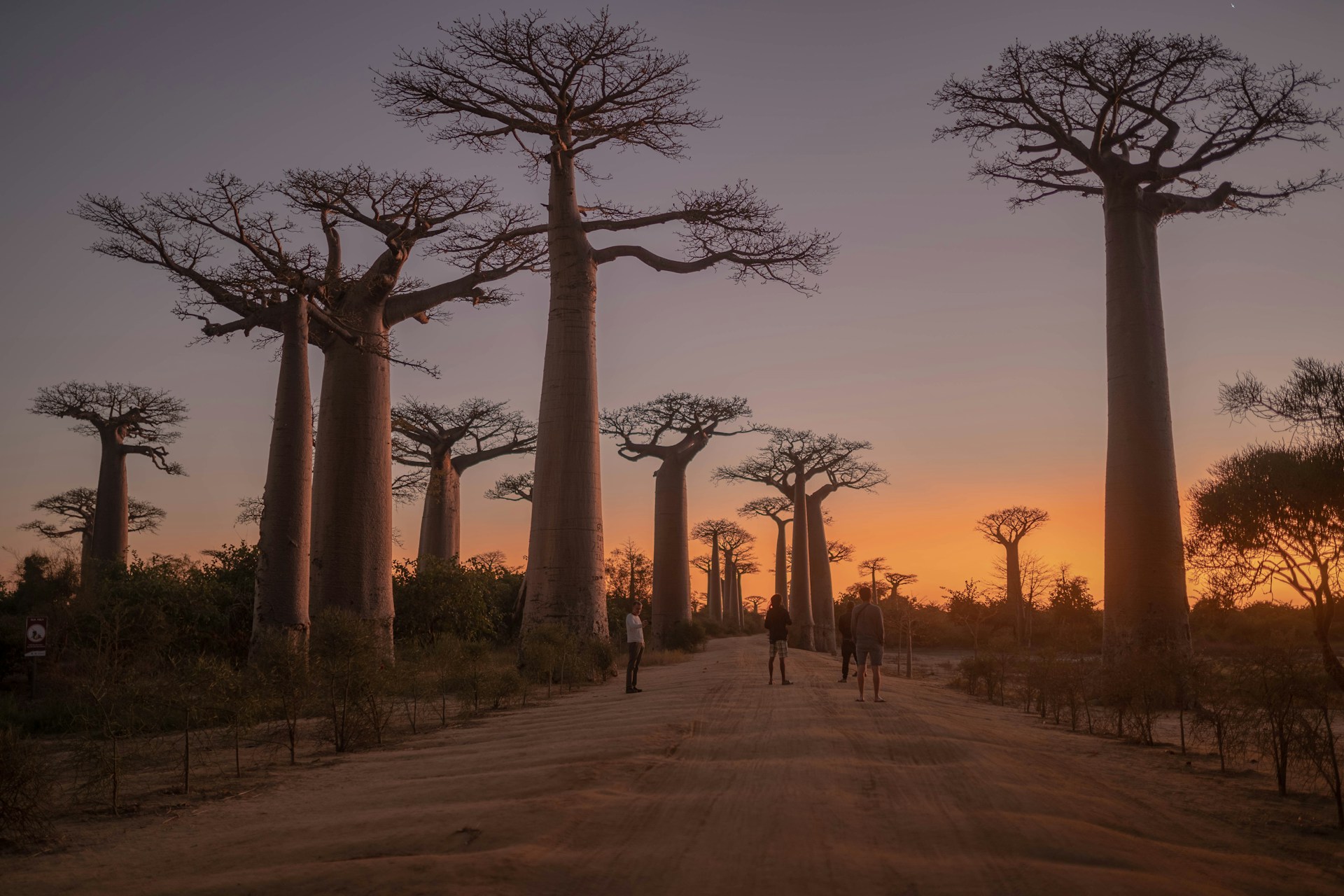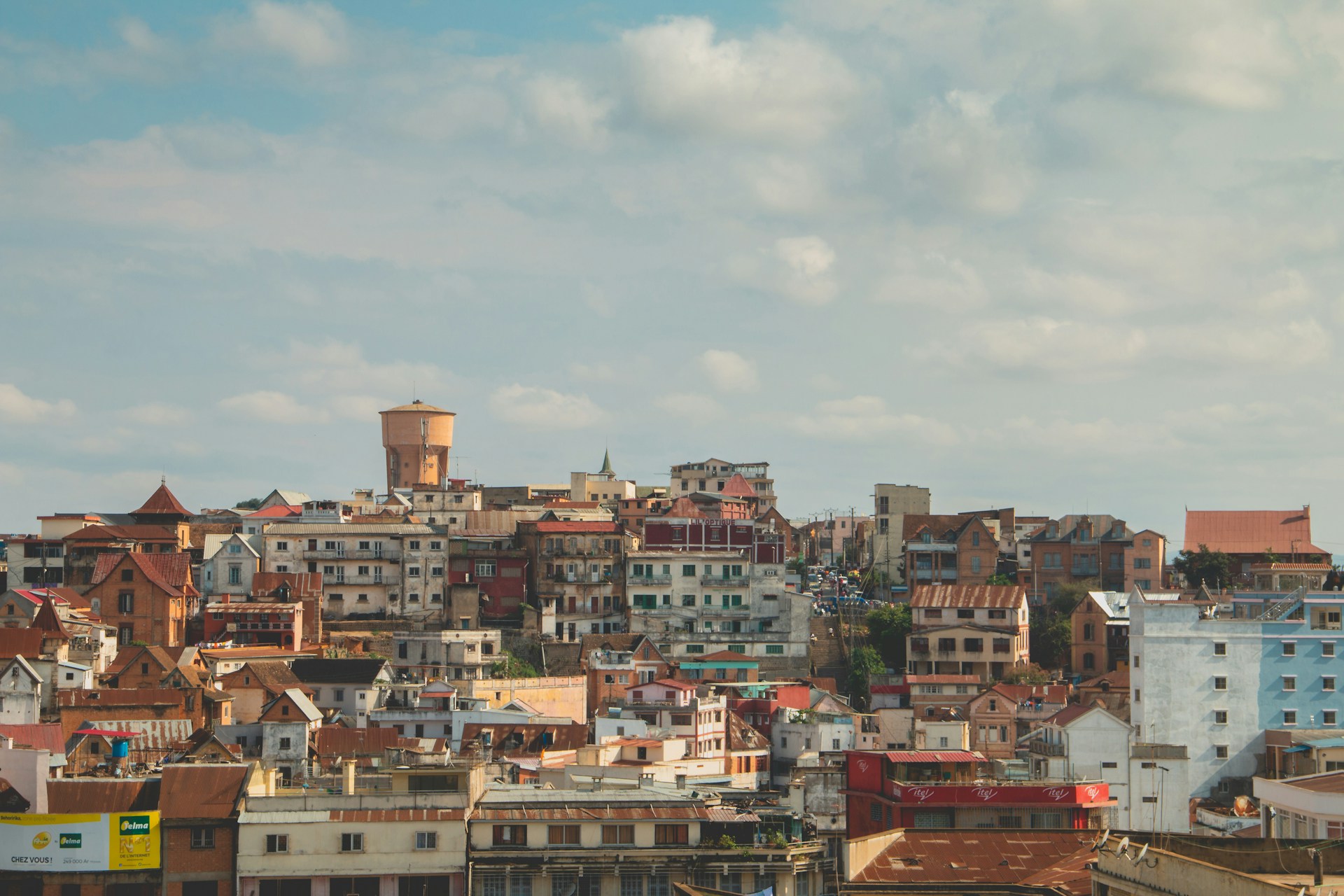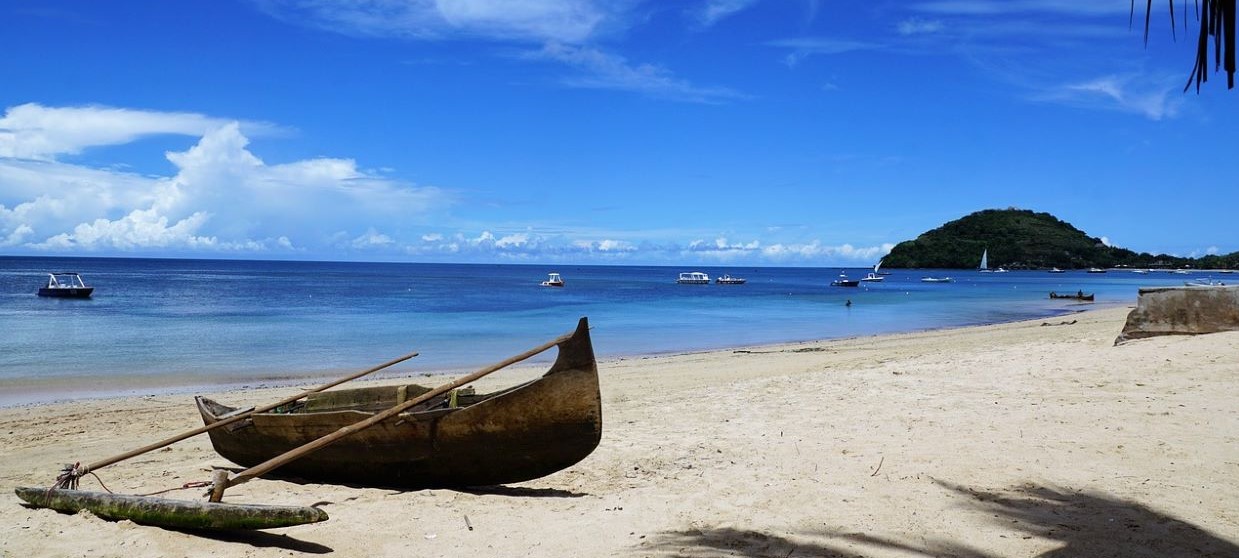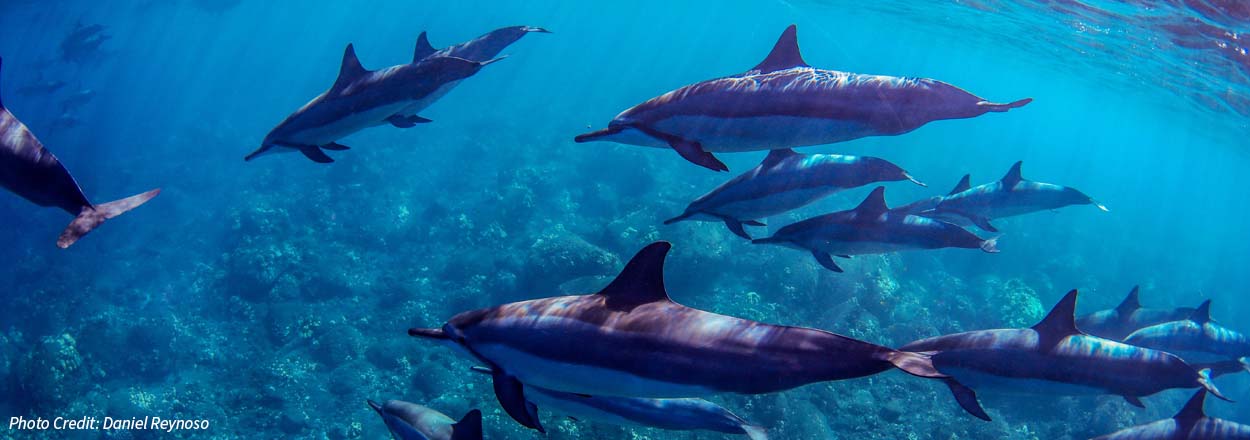Nestled 250 miles away from the southeastern coast of Africa in the Indian Ocean, the world’s fourth-largest island awaits. Though not topping many traveler’s lists, with this island nation’s crystal-clear blue waters, diverse terrains and rich culture, it embodies some of the best parts of other popular tourist destinations such as the Maldives, Thailand and Australia. In addition to its stunning landscapes, nearly 90% of the plant and animal species are endemic to the country, making this destination an ideal spot for outdoor exploration. An overlooked haven, come explore the best of Madagascar, both its notable attractions and off-the-beaten-path escapes.
Notable Attractions
Even if a traveler doesn’t know much about Madagascar, there’s one thing often associated with the land: super tall trees with flat tops and spindly branches. These trees, called the Baobabs, are a staple of the island country, and it’s only right to revel in their beauty when visiting. Travelers can find these rare gems at the Avenue of the Baobabs in western Madagascar. It’s estimated the trees are over 800 years old, the trunks topping over 150 feet tall. The Baobabs are breathtaking any time of day, but the hours of sunset and sunrise come highly recommended.

Speaking of natural oddities in Madagascar, Tsingy Rouge Park is a must-see attraction. The word “tsingy” means “where one cannot walk barefoot,” and considering the needle-like disposition of the rock formations here, it’s aptly named. Red laterite is a clay-like substance, and due to the erosion from the Irodo River in northern Madagascar, the rocks have been shaped into the pointy structures they are today. This attraction may be popular, but it is quite a way off the main roads — travelers will need the help of a tour guide to safely get to the park. Visitors can see these formations at the Tsingy de Bemaraha National Park as well, which is home to many rare and endangered species of animals, including the lemur and chameleon.
As an island country, Madagascar is also home to over 250 islands, some of which are particularly popular among visitors. Nosy Be is one of Madagascar’s largest, located off its northwestern coast. Nosy Be enraptures travelers with its warm white sand beaches and sparkling blue-green waters. The highest point on the island, Mont Passot, is a great way to view the surrounding landscapes from above, while the extensive coral reefs allow visitors to explore the island from a different perspective underwater. Take a break from the outdoor adventures with a trip to Nosy Be’s largest town, Andoany. The area is heavy on French inspiration, evident in the colonial buildings, Renault taxis and the main shopping street.
Nosy Be’s counterpart, Nosy Boraha, offers the same tropical atmosphere with a more intimate vibe. This island is no more than a thin strip of land, made up of traditional fishing villages and quiet beaches. Despite its laid-back demeanor today, it’s said that Nosy Boraha was once home to pirates in the 17th and 18th centuries. As a result, there’s plenty of pirate shipwrecks to view via scuba diving or snorkeling, and the island has its own legitimate pirate cemetery, Pirate Cemetery of Saint-Pierre, that travelers can visit.
Off-The-Beaten-Path
Of course, tourist attractions are fun until it’s peak season and they start to feel overcrowded. Travelers interested in visiting Madagascar’s popular islands should also consider Nosy Be’s underrated neighbor, Nosy Komba. The small volcanic island is home to a variety of lemur species, which presents the perfect opportunity for visitors to see them in their natural habitat. Travelers can embark on a journey out on the water to discover the islets, join fishermen on a sea trip, take a sailboat cruise, whale watch (in season) and participate in an abundance of other outdoor excursions.

Moving back onto Madagascar’s mainland, the county’s capital, Antananarivo, or Tana, is a stop hidden in plain sight. Tana is home to Ivato International Airport, so it’s generally the first arrival sight for international visitors. Despite it welcoming most of the country’s visitors, many don’t stick around for long as Tana is used as a connecting point to other parts of Madagascar. However, the city is one with loads of history and attractions, starting with the Rova Palace Complex. It was home to rulers of various kingdoms during the 17th and 19th centuries, and though it was tragically gutted by a fire, the ruins are still standing. While the decadence of the Rova Palace Complex may have been lost to the blaze, its artifacts were not. The city’s museum, Musee Andafiavaratra, displays all the rescued pieces throughout and is the perfect opportunity for visitors to learn about Madagascar’s history and culture.
Curious eaters should head over to Analakely Market, Tana’s main marketplace, jam-packed with vendors selling native fruits and veggies, in addition to trinkets, fabrics and household items. Ville Vanille, a restaurant specializing in Malagasy cuisine, is nearby as well. The menu is heavily inspired by the island’s famous vanilla crop, and the rich flavors of these traditional dishes won’t disappoint.
The hustle and bustle of Madagascar’s capital may not be for everyone, so kick back and relax in the charming town of Antsirabe. Known for its textiles, tobacco and agriculture, Antsirabe, meaning “where there is much salt,” is also nicknamed the “City of Water.” Rightfully so, as the water here is abundant in minerals and salts and is said to have therapeutic properties. Naturally, taking a thermal bath is a must. Complete a trip to this city with scenic stops at East Park and Antsirabe Cathedral Church.






comments